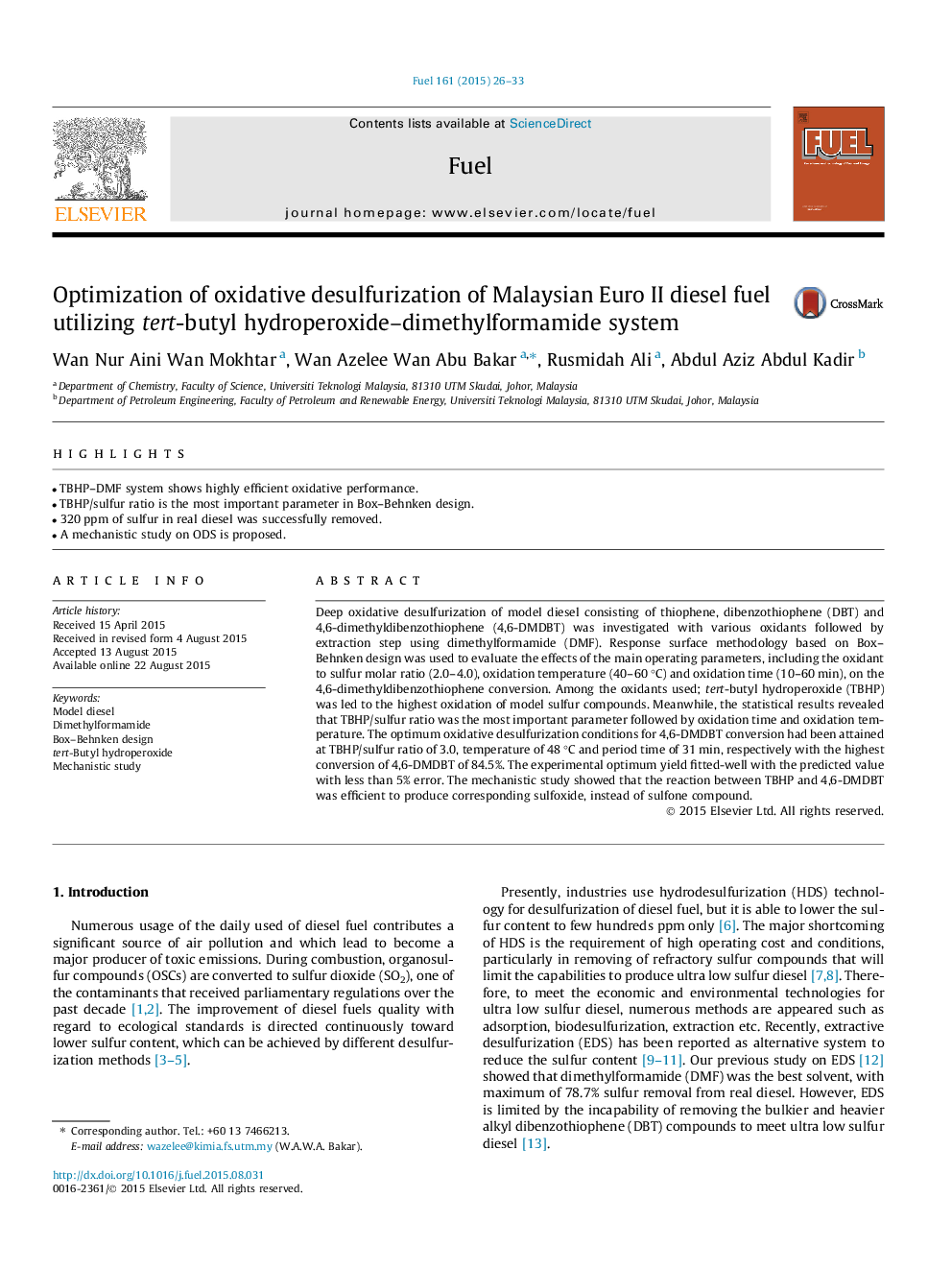| کد مقاله | کد نشریه | سال انتشار | مقاله انگلیسی | نسخه تمام متن |
|---|---|---|---|---|
| 205421 | 461109 | 2015 | 8 صفحه PDF | دانلود رایگان |

• TBHP–DMF system shows highly efficient oxidative performance.
• TBHP/sulfur ratio is the most important parameter in Box–Behnken design.
• 320 ppm of sulfur in real diesel was successfully removed.
• A mechanistic study on ODS is proposed.
Deep oxidative desulfurization of model diesel consisting of thiophene, dibenzothiophene (DBT) and 4,6-dimethyldibenzothiophene (4,6-DMDBT) was investigated with various oxidants followed by extraction step using dimethylformamide (DMF). Response surface methodology based on Box–Behnken design was used to evaluate the effects of the main operating parameters, including the oxidant to sulfur molar ratio (2.0–4.0), oxidation temperature (40–60 °C) and oxidation time (10–60 min), on the 4,6-dimethyldibenzothiophene conversion. Among the oxidants used; tert-butyl hydroperoxide (TBHP) was led to the highest oxidation of model sulfur compounds. Meanwhile, the statistical results revealed that TBHP/sulfur ratio was the most important parameter followed by oxidation time and oxidation temperature. The optimum oxidative desulfurization conditions for 4,6-DMDBT conversion had been attained at TBHP/sulfur ratio of 3.0, temperature of 48 °C and period time of 31 min, respectively with the highest conversion of 4,6-DMDBT of 84.5%. The experimental optimum yield fitted-well with the predicted value with less than 5% error. The mechanistic study showed that the reaction between TBHP and 4,6-DMDBT was efficient to produce corresponding sulfoxide, instead of sulfone compound.
Journal: Fuel - Volume 161, 1 December 2015, Pages 26–33